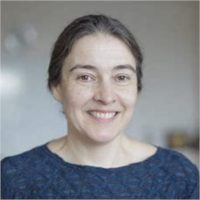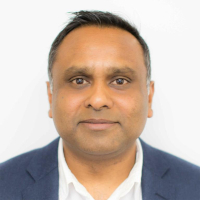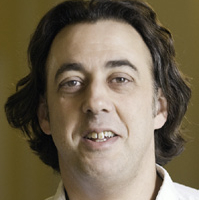Prof Manish Chhowalla
WP 1.2
Manish Chhowalla is the Goldsmiths’ Professor of Materials Science at the University of Cambridge. His research interests are in the fundamental studies of atomically thin two-dimensional transition metal dichalcogenides (TMDs). In particular, his group studies the optical and electronic properties of different phases of 2D TMDs. He has demonstrated that it is possible to induce phase transformations in atomically thin materials and utilize phases with disparate properties for field-effect transistors, catalysis, and energy storage. Prof Chhowalla is a Fellow of the Materials Research Society, Institute of Physics, the Royal Society of Chemistry and Churchill College. He was the founding Editor in Chief of Applied Materials Today and is now the Associate Editor of ACS Nano. He has been on the Clarivate Highly Cited Researchers since 2016.
Prior to Cambridge, Prof. Chhowalla was a Distinguished Professor at Rutgers University in New Jersey, USA. He was also the Director of the Institute of Advanced Materials, Devices & Nanotechnology at Rutgers. Before that, he was a doctoral student in the Electrical Engineering Department at the University of Cambridge and Churchill College. After his doctorate and Royal Academy of Engineering Postdoctoral Fellowship, Professor Chhowalla briefly worked in industry where he developed applications for “amorphous diamond”.
2D Materials and Devices Group

Prof Clare Grey
WP 1.1, WP 2
Clare Grey is a chemist and expert in the application to materials of nuclear magnetic resonance (NMR), a physical phenomenon that allows observations of atomic nuclei. In particular, she uses NMR to study rechargeable lithium-ion batteries (LIB) and their potential for use in energy storage applications that benefit the environment.
Clare and her team developed NMR methodology to monitor structural changes that occur during the operation of a battery. Her research has helped us to understand how batteries charge and discharge, and has also clarified the physical properties of a number of technologically important materials.
Clare now investigates the effect of local structure and electronic properties on LIB performance and is testing wider applications of the technology. Her work has introduced LIBs for use in combination with new renewable energy sources and to the field of transportation. Clare’s research has been recognised by several awards, including the Günther Laukien prize in 2013, and the Davy Medal of the Royal Society in 2014.
Prof Dominic Wright
WP 2 Leader
Dominic Wright was born in Gosport, Hampshire in 1964 but spent most of his early education in Scotland where his family moved in 1974. He obtained a first-class honours degree at the University of Strathclyde in pure and applied chemistry (1982-1986) before moving to Cambridge to undertake PhD studies on lithium battery materials under the late Ron Snaith (1986-1989).
After obtaining a research fellowship at Gonville and Caius College Cambridge (1989-1991) he was appointed Lecturer in Inorganic Chemistry (1991-2002) at Cambridge and was then promoted to Reader (2002-2010) before being promoted to his current position as Personal Chair in Inorganic Chemistry while maintaining his fellowship at Gonville and Caius College.
Dominic has published over 300 papers on diverse aspects of main group and transition metal chemistry. He is also named inventor on 6 international patents.
He was the recipient of the 2012 RSC Main Group Chemistry Award and the 1993 Royal Society Meldola Medal.
For more information, see his interview in Chemical Communications or his profile on the Department of Chemistry website.



